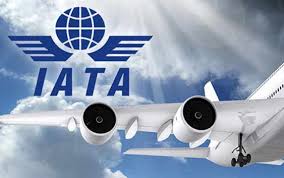Africa’s air cargo industry recorded the steepest drop in global demand in March 2025, with a 13.4 per cent year-on-year decline, according to data released by the International Air Transport Association (IATA). The figures highlight a continued struggle for the continent’s aviation sector despite a significant increase in available cargo space.
While capacity across Africa rose by 10.5 per cent compared to March 2024, demand in the region sharply fell, underlining a growing mismatch between supply and market need. Nigeria, one of the continent’s major aviation hubs, was also affected by the low cargo performance.
Globally, however, the air cargo market experienced modest growth. Total demand, measured in cargo tonne-kilometers, rose by 4.4 per cent in March 2025 compared to the same month last year, with international operations accounting for a 5.5 per cent increase. Capacity worldwide also expanded by 4.3 per cent year-on-year.
IATA’s Director-General, Willie Walsh, attributed the overall positive global figures to a combination of factors, including businesses rushing shipments ahead of new trade tariffs announced by the Trump administration in the United States, which were scheduled to take effect on April 2, 2025.
“March cargo volumes were strong. This may be partly a front-loading of demand as some businesses tried to beat the well-telegraphed tariff announcement,” Walsh said. He noted that while political uncertainty could negatively affect long-term trade, lower jet fuel costs have had a short-term positive effect on the cargo market.
Jet fuel prices dropped by 17.3 per cent year-on-year, marking the ninth consecutive month of year-on-year declines. This reduction in fuel cost has been helpful for cargo carriers globally, although it has done little to lift demand in Africa.
According to IATA, the low performance in Africa contrasts with more positive outcomes in other regions. Asia-Pacific airlines led globally with a 9.6 per cent rise in cargo demand and an 11.3 per cent increase in capacity. North American carriers recorded a 9.5 per cent growth in demand and 6.1 per cent in capacity, while European carriers saw a 4.5 per cent rise in demand and a 2.0 per cent increase in capacity.
Latin American carriers experienced a 5.8 per cent increase in demand with a 4.7 per cent rise in capacity. Middle Eastern carriers, however, posted a 3.2 per cent decline in demand despite a 0.8 per cent increase in capacity. IATA suggested the decline might be due to a strong base effect from 2024, when maritime freight disruption in the Red Sea boosted air cargo volumes.
On broader trade indicators, world industrial output grew by 3.2 per cent, and global trade volumes expanded by 2.9 per cent year-on-year. Inflation rates across key economies have also eased. The U.S. inflation rate dropped to 2.4 per cent in March, the European Union recorded 2.5 per cent, and Japan’s rate fell to 3.6 per cent. China remained in deflation, though the rate slightly improved to -0.1 per cent.
Despite the global improvements, the persistent cargo decline in Africa raises concerns about the continent’s integration into global supply chains and its ability to benefit from improved trade dynamics.
